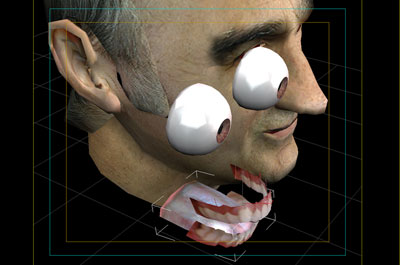
Intro: >>Our desire to construct simulated human talking machines may be traced to Joseph Faber's Euphonia (1830) an artificial face attached to the front of a series of exposed bellows; plates, chambers and an artificial tongue that could make it speak. Advanced computer technologies of the twenty first century, such as complex modeling and animation, audio speech synthesizing, text to speech systems and image manipulation, have enabled the construction of virtual characters that closely mirror their human counterparts. Envisioned, as standing in for the human these virtual beings may be used as virtual actors, interactive memory albums or visual speech tools for hearing impaired people, replacing people altogether. To date, designers of these virtual beings have concentrated on simulating the human visage and language, however Norman Badler explains that although animation quality is essential to creating a life-like simulation, the virtual being "...needs to have goals, emotions, motivations...a background, a culture, and history". It is within this context that I will discuss Stelarc's recently exhibited Prosthetic Head -- an enhanced and modified Alice chat-bot that resembles the artist.< <
Link

